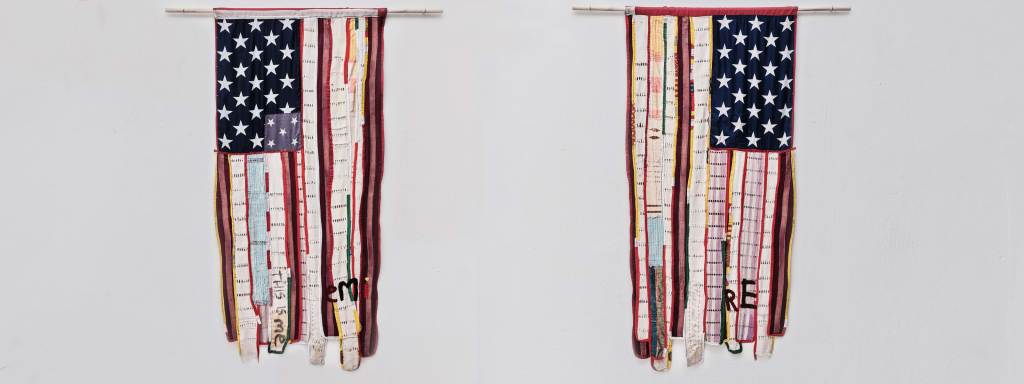For Which It Stands

For Which It Stands is an evolving physical and online exhibition platform featuring contemporary artists who use the iconic American flag, loaded with centuries of convoluted history and exclusion, to create new symbols of national identity. Amid a highly volatile political climate and rise in white nationalism across the country, these artists assert their place and affirm the multiplicity of the American experience while addressing issues including police brutality, systemic racism, socioeconomic disparities, patriarchy, and misinformation.
Between 1838 and 1917, over half a million indentured workers were taken to plantations in Guadeloupe, Guyana, Jamaica, Trinidad and Tobago, and elsewhere, intended as replacement labor following the abolition of slavery. Their subsequent experiences and those of their descendants revealed their sea voyage as a place of destruction and creation, a concept Torabully termed “Coolitude,” after Aimé Césaire’s “Négritude.” East and South Asian migration to the Caribbean is marked by violence similar to (but not the same, and not equal to) those of the system of slavery that preceded it. And like enslaved and formerly enslaved people, these migrants were and are also engaged in “wrecking work.” Blows were struck to the Hindu caste system, patriarchy, and other systems of power, new forms of culture and knowledge emerged, and, more often than not, better material living conditions for subsequent generations resulted.
The artworks that comprise everything slackens in a wreck demonstrate both this long, continuing history of survival and the particular contours of the artists’ lives and their necessary choices within the various spaces they inhabit in the Americas. Margaret Chen (Jamaica/Canada), Andrea Chung (USA), Wendy Nanan (Trinidad and Tobago) and Kelly Sinnapah Mary (Guadeloupe) share a lineage in indentureship, and each contends with the complex legacy of this heritage over a century after their ancestors boarded ships headed from Asia to the Americas. They grieve and criticize the enduring, destructive impact of processes of colonization, but in their practices—whether giving new life to old discards or proposing new ways of looking—they also recognize migrants’ determined survivability. They find and activate productive opportunities in the midst of crisis.
Gallery hours:
Monday – Saturday 11am-6pm
Ford Foundation Gallery
320 E 43rd St, New York, NY 10017
Visitor info
All program details and updates may be found on social media via Instagram @forwhichitstands